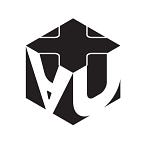Bio Digital City, Tomorrow’s Seoul
2014 Seoul International Workshop: Bio-Digital City Tomorrow’s Seoul Project
Organizer: Seoul Metropolitan Government, La France En Coree Ambassade De France
Tutors: Dr. Jung Hyun Woo, Na An, Hyuni Jeong
Final Video Presentation
Team D-A: The Self-Sufficient City, Seoul
Team D-B: Seed Terminal, Urban Agriculture HQ in Seoul
Bio Digital City, Tomorrow’s Seoul is a workshop to discuss the topic of how to create a self-sustaining city. Giving lecturing on urban eco-systems and leading hand-on workshops for Students’ design works including architectural urban typology development and fabrications during the workshop.
Teaching Overview
Recently urban agriculture has been recognized as a significant industry to improve the quality of citizens’ lives along with the attention to healthy foods. Frank Llyod Wright suggested “Broadacre city (1934)” was an innovative theory and idea which showed the potential of future agriculture city with cutting-edge transportation technologies. Each family can own independent farming areas and self-sustainable lives with the architectural environment which suggested true independent life in the urban area. So urban agriculture has been discussed and developed as a significant feature in modern architectural studies.
In team D, we contemplated the role of urban agriculture in Seoul, benefits, and potential use through workshops with students. It started with research questions about urban agriculture and was guided into 1. how to merge digital media technologies to urban agriculture, 2. how to connect physically remote places with diverse functions, and 3. how to utilize media as a communication and design method to promote residents’ active participation. We reached to a conclusion to select three areas in Seoul for students to propose design ideas appropriate for each region. The efficiencies of media and new experiences in architectural spaces in the context of urban agriculture are provided along the way. They were also guided to systematically develop their methodology to establish and realize their ideas.
Among the topics of The food independent city Seoul, The Edible & Strange City, Seoul, and For City Health Seoul, the most useful digital feature was the sharing environment to promote users’ active communication and information exchange. Team A proposed architectural design with Utopian urban scenarios. A self-sustainable city refers to the system to produces and consumes itself. Considering the high population density in Seoul, the research for land size to produce a day-amount food for a Seoul citizen(based on 2,500kcal a day standard) was conducted. If the given site (Ichon Apartment complex, Han river mansion areas) is not enough, the solution had to be suggested through design ideas. We also spent a good time discussing the sustainable road map in urban context how residents will be provided with sources and consume the foods. Team B proposed Edible park in the city to design a space to provide new experiences and activities for citizens. Considering the climate and site’s bio-characteristics (Dangsan factory site and Lotte car repair sites), the research for the edible garden was performed. It also included the connection among open markets, restaurants, and urban farms to consider economic sustainability as well. The easiest way to be provided with food in the city is the supermarket. But when you look into all the food mileage of most of the products in the market, the price inevitably goes up on the top of all the emissions made on the way. So the Mobile farm unit, Portable space that can be used in each home were designed and proposed. The site was the Ichon Apartment area where complex residential areas are located.
Team A, B, and C commonly worked on the idea of connection through mobile to be provided with information of plants, ideas for farming, and distribution- which is natural communication among residents through media. Going further from there, the students were guided to consider the media technology center, common and personal farming with architectures optimized for solar energy and energy efficiencies. The final outcome of the project was instructed to be made in a video presentation with scenarios and storyboards were also made for clear message delivery with interesting visual effects. These processes themselves were a good opportunity for students to learn the presentations of architecture in different formats.
Lastly, urban agriculture has enough potential to work as an alternative for urbanization problems Seoul is already going through. Especially the landscape of Seoul full of grey buildings due to rapid population density growth can be solved by urban agriculture which can provide green views as well as efficient city functions. More than anything it can contribute to creating eco-friendly Seoul where green plants bring flowers, birds, and bees altogether.
